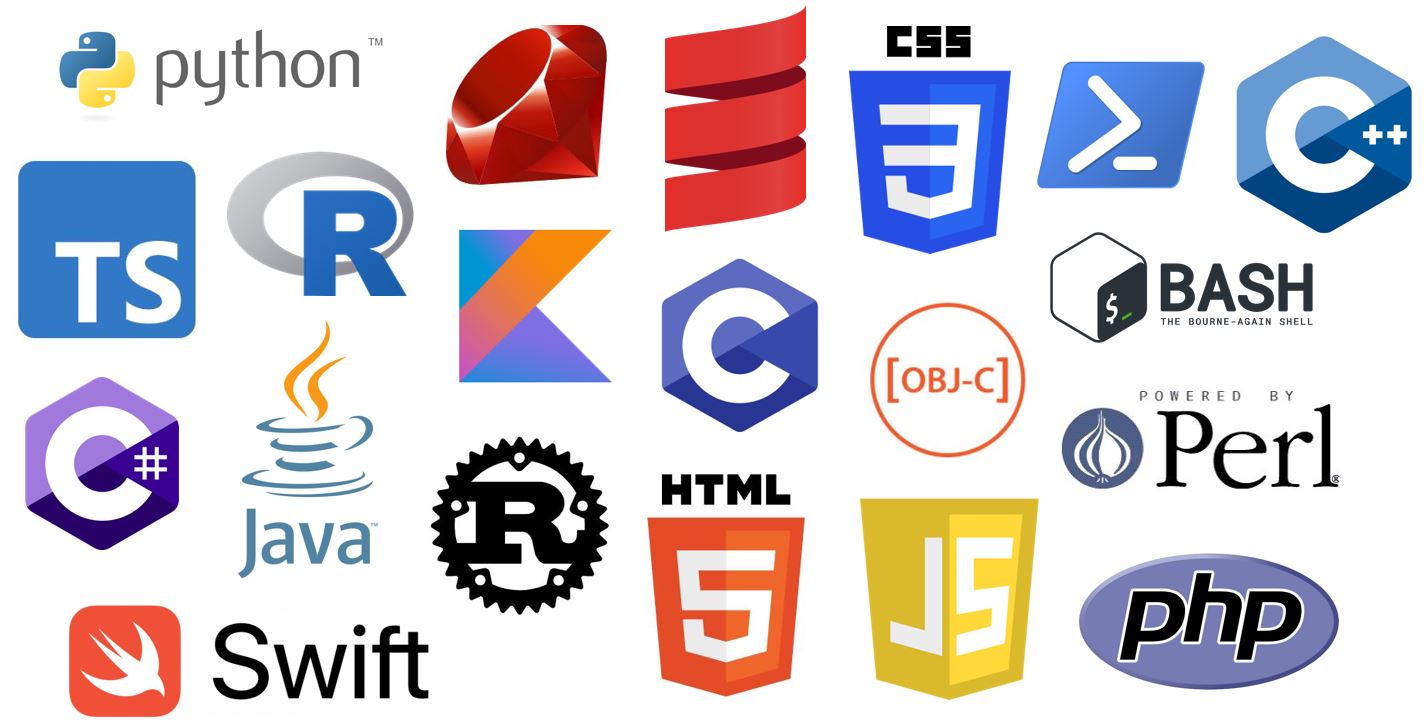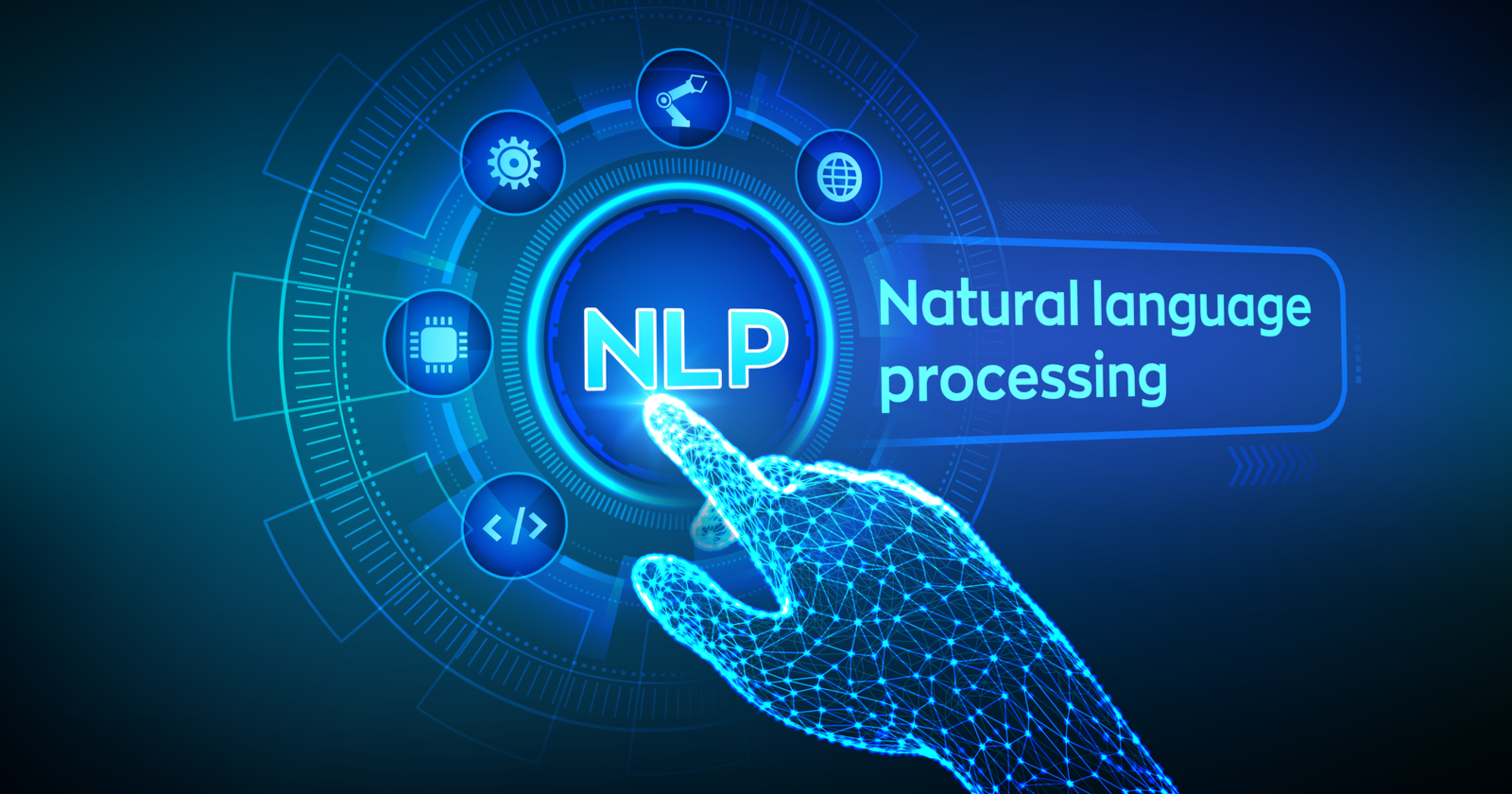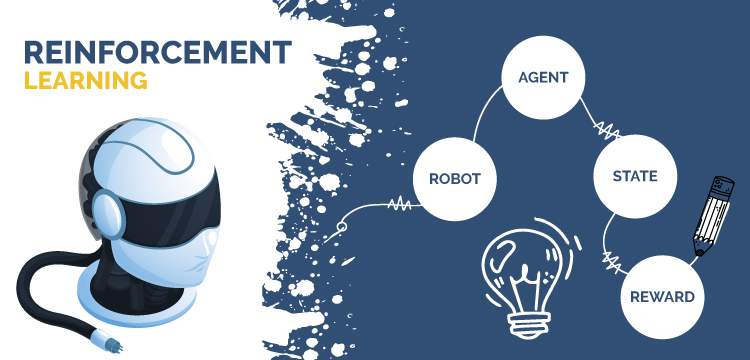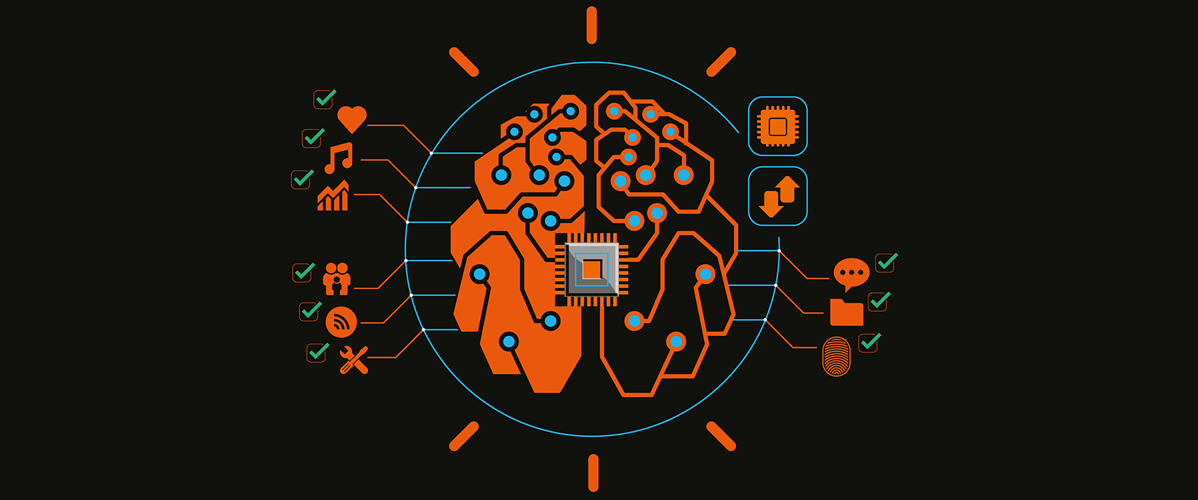Artificial Intelligence (AI) has rapidly emerged as a transformative force across industries, revolutionizing the way we live and work. As organizations embrace AI technologies, there is an increasing demand for professionals who possess the right technical skills to integrate AI effectively. Today, we fully appreciate the potential of Artificial Intelligent also familiar with their role in the futuristic human revolution. It is time to upgrade ourselves in the field of AI for better collaboration between Humans and Machines. In this blog post, we will explore the top 10 technical skills that are crucial for professionals looking to harness the power of AI in their respective fields.
Machine Learning (ML) and Deep Learning

Machine learning lies at the heart of artificial intelligence (AI), and a solid understanding of ML algorithms and techniques is essential for anyone looking to dive into this exciting field. ML encompasses a wide range of algorithms, such as linear regression, decision trees, support vector machines, and random forests, to name just a few. These algorithms allow machines to learn from data and make predictions or take actions based on patterns and insights derived from that data.
One notable subset of machine learning is deep learning, which focuses on neural networks. Inspired by the structure and function of the human brain, neural networks are composed of interconnected nodes, or “neurons,” that work together to process and analyze complex data. Deep learning has revolutionized the field of AI by achieving remarkable breakthroughs in tasks such as image and speech recognition, natural language processing, and even playing strategic games like chess and Go.
To fully harness the power of machine learning and deep learning, aspiring AI practitioners should familiarize themselves with popular frameworks like TensorFlow and PyTorch. TensorFlow, developed by Google, is an open-source library that provides a comprehensive ecosystem of tools and resources for building and deploying ML models. PyTorch, on the other hand, is an open-source deep learning framework developed by Facebook’s AI Research lab. Both frameworks offer powerful capabilities and are widely used in the AI community.
By gaining proficiency in these frameworks, practitioners can effectively tackle various AI challenges. They can leverage pre-trained models or build their own by selecting and fine-tuning different neural network architectures. With the ability to process massive amounts of data and perform complex computations, AI models powered by machine learning and deep learning can deliver impressive results across a wide range of applications, including autonomous driving, healthcare, finance, and e-commerce.
Programming Languages

When it comes to AI integration, having a strong proficiency in programming languages is essential. One language that stands out in the AI community is Python. Python’s simplicity, versatility, and extensive libraries make it the go-to language for AI development. With powerful frameworks like TensorFlow and PyTorch, developers can easily build and train complex AI models.
Python’s rich ecosystem of libraries such as NumPy, Pandas, and Scikit-learn provide robust tools for data manipulation, analysis, and machine learning. These libraries enable developers to preprocess and transform data, extract insights, and train models efficiently.
Aside from Python, there are other languages commonly used in AI applications. R, for example, is highly regarded in the field of statistical analysis and data visualization. Its extensive collection of packages like ggplot2 and dplyr make it a preferred choice for researchers and data scientists working with statistical data.
Some of the top Programming Language you should learn for AI development
- Python
- R
- Lisp
- Julia
- C++
- Java
Data Science and Analytics

A strong foundation in data science and analytics is crucial for AI integration. This includes a wide range of skills and knowledge, starting with a solid understanding of data preprocessing techniques. In order to ensure that the data is clean, accurate, and ready for analysis, it’s essential to perform tasks such as data cleaning, data transformation, and dealing with missing values.
Once the data is preprocessed, the next step is to conduct exploratory data analysis (EDA). EDA involves summarizing and visualizing the data to gain a better understanding of its distribution, patterns, and relationships between variables. This process often involves using statistical techniques, such as calculating descriptive statistics, creating histograms or scatter plots, and performing correlation analyses.
Feature engineering is another crucial aspect of data science that is relevant to AI integration. This involves creating new features or transforming existing ones to improve the performance of machine learning algorithms. Feature engineering may include tasks such as creating interaction terms, encoding categorical variables, scaling numerical features, or even extracting features from unstructured data like text or images.
In addition to these technical skills, a solid understanding of statistical concepts is important for effectively analyzing data. Statistical concepts such as hypothesis testing, regression analysis, and probability distributions provide the foundation for making meaningful inferences from data. By applying statistical techniques, data scientists can draw conclusions and make predictions based on the patterns and relationships they discover in the data.
Lastly, data visualization is an important skill for communicating insights effectively. By creating clear and visually compelling charts, graphs, and dashboards, data scientists can help stakeholders understand complex data patterns and trends more easily. Data visualization techniques can be used to provide meaningful and actionable insights that can drive informed decision-making.
Natural Language Processing (NLP)

Natural Language Processing (NLP) is a field of artificial intelligence (AI) that focuses on enabling machines to understand and interpret human language. It involves using computational techniques and algorithms to analyze, process, and generate meaningful insights from large volumes of text data.
One of the main goals of NLP is to bridge the gap between human language and machine understanding. Through the application of various techniques and methodologies, NLP allows computers to comprehend and process human language in a way that is similar to how humans do. This includes understanding the semantics, syntax, and context of the text.
NLP has a wide range of applications and is being used in various industries and domains. For example, sentiment analysis is a commonly used NLP technique that helps businesses gauge public opinion about their products or services by analyzing social media posts, customer reviews, or feedback. Text classification is another important NLP task that can be used to automatically categorize documents into different topics or classes, which is beneficial for tasks like document organization, news classification, or spam detection.
Named Entity Recognition (NER) is another key aspect of NLP, which involves identifying and classifying named entities such as names, organizations, locations, dates, or other specific terms in a given text. This technique is widely used in applications like information extraction, search engines, and recommendation systems.
With advancements in NLP, we are witnessing the development of AI-powered chatbots, language translators, and content analysis tools. Chatbots, for example, can use NLP techniques to understand and respond to user queries, providing personalized and efficient customer support. Language translators rely on NLP to convert text from one language to another accurately and efficiently. Content analysis tools leverage NLP techniques to extract valuable insights from large amounts of text, aiding researchers, marketers, and content creators in understanding trends, sentiments, and patterns within textual data.
In conclusion, NLP plays a vital role in enabling machines to process, understand, and generate meaning from human language. Its applications are vast and continue to evolve as technology advances. As NLP techniques improve, we can expect even more sophisticated and intelligent language processing systems that will revolutionize how we interact with machines and access information.
Computer Vision

Computer vision, a subfield of artificial intelligence, is a multidisciplinary domain that focuses on enabling machines to interpret and understand visual data. It involves state-of-the-art techniques and algorithms that aim to mimic human-like vision capabilities. By leveraging advanced algorithms, computer vision systems can effectively analyze, process, and extract meaningful information from images and videos.
One of the key tasks in computer vision is image recognition, which involves training models to identify and classify objects or patterns within images accurately. This technology finds extensive application in various industries, ranging from autonomous vehicles and robotics to biometrics and security systems. For example, computer vision algorithms enable self-driving cars to detect and analyze road signs, vehicles, pedestrians, and other objects on the road, providing a crucial foundation for safe and reliable autonomous navigation.
Another vital aspect of computer vision is object detection, which goes beyond simple image recognition and involves localizing and identifying multiple objects within an image. This capability allows systems to not only recognize objects but also provide information about their precise location and boundaries. This technology plays a significant role in surveillance systems, where it helps in identifying and tracking individuals or objects of interest from a network of security cameras.
Image segmentation is yet another critical task in computer vision, where the goal is to partition an image into meaningful regions or segments based on their visual characteristics. This technique finds widespread use in medical imaging, where it helps in the identification and analysis of specific structures or anomalies within images, aiding diagnosis and treatment planning in fields such as radiology.
To implement computer vision solutions, developers often rely on frameworks like OpenCV (Open Source Computer Vision Library), which provide a comprehensive set of tools and functions for building computer vision applications. OpenCV offers a wide range of pre-built algorithms for tasks like image processing, feature extraction, and object detection, simplifying the development process and making it accessible to both researchers and practitioners.
In summary, computer vision plays a crucial role in enabling machines to understand and interpret visual data. Through image recognition, object detection, and image segmentation algorithms, computer vision systems pave the way for advancements in autonomous vehicles, surveillance systems, medical imaging, and many other fields, opening up new possibilities for automation, efficiency, and safety.
Big Data and Distributed Computing

AI applications are revolutionizing various industries, from healthcare to transportation, by enabling advanced automation, predictive analytics, and personalized recommendations. However, to develop effective AI solutions, one must possess a solid understanding of not only the algorithms and techniques powering AI but also the underlying infrastructure required to support its implementation.
One key aspect of AI applications is their ability to handle large volumes of data. With the proliferation of digital information, businesses and organizations are constantly accumulating massive datasets. These datasets serve as the fuel that powers AI models, allowing them to learn and make accurate predictions. However, effectively managing and processing such large amounts of data can be a daunting task.
This is where the importance of distributed computing frameworks like Apache Hadoop and Apache Spark comes into play. These frameworks are specifically designed to handle big data. Apache Hadoop utilizes a distributed file system called HDFS (Hadoop Distributed File System) to store and distribute the data across multiple nodes in a cluster. It also provides a powerful processing framework called MapReduce, which allows for parallel processing and efficient computation across the distributed data.
Apache Spark, on the other hand, is a fast and general-purpose cluster computing system that provides APIs for programming various data processing tasks. It offers in-memory computing capability, enabling significantly faster data processing compared to traditional disk-based systems. Spark also provides built-in support for machine learning and graph processing algorithms, making it a popular choice for AI applications.
Having hands-on experience with these distributed computing frameworks can greatly enhance your AI integration skills. It enables you to efficiently store, manage, and process large datasets, ultimately improving the performance and scalability of your AI models. Additionally, familiarity with data storage and processing technologies like HDFS and MapReduce opens up opportunities to optimize data pipelines and implement data preprocessing techniques necessary for building robust AI systems.
Cloud Computing

Cloud computing has completely transformed the way businesses handle their IT infrastructure and has become an integral part of modern-day operations. One of the key advantages of cloud computing is its ability to provide scalable and flexible infrastructure for AI applications.
With cloud platforms like Amazon Web Services (AWS), Microsoft Azure, or Google Cloud Platform (GCP), businesses can easily leverage powerful computing resources and infrastructure to store and process large amounts of data. This is particularly crucial for AI applications, as they often require extensive computational power and storage.
By utilizing cloud services, businesses can access on-demand resources and pay only for what they use, eliminating the need for costly investments in hardware and software. This not only saves money but also provides the flexibility to scale resources up or down based on demand.
Cloud platforms also offer a wide range of AI-specific services and tools, making it easier for businesses to develop, train, and deploy AI models. These services often include pre-trained machine learning models, automated model training workflows, and managed inference hosting environments. This simplifies the process of building and deploying AI applications, enabling businesses to bring their ideas to market faster.
Furthermore, cloud providers offer robust data security measures, such as encryption, access controls, and regular backups, to ensure the confidentiality and availability of data. This is especially important when dealing with sensitive data in AI applications.
In summary, familiarity with cloud platforms and their AI services is crucial for businesses looking to harness the power of AI. Cloud computing provides scalable and flexible infrastructure, cost savings, and a range of specialized AI tools and services, enabling businesses to unlock the full potential of artificial intelligence.
Robotics and Automation

As AI continues to advance at a rapid pace, the integration of AI with robotics and automation is becoming increasingly important across various industries and sectors. This transformational combination of technologies holds the potential to revolutionize the way we live, work, and interact with the world around us.
The field of robotics, control systems, and automation is at the forefront of this developmental shift. Robotics involves the design, construction, and programming of robots that can perform tasks autonomously or with human guidance. With the aid of AI, robots can learn from their experiences, adapt to changing environments, and make decisions based on real-time data.
Control systems play a crucial role in ensuring robots operate efficiently and effectively. These systems allow robots to monitor and control their movements, interactions, and responses to different stimuli. By integrating AI algorithms into control systems, robots can gather sensor data, process information, and make intelligent decisions in real-time, enhancing their autonomy and performance.
Automation technologies, on the other hand, streamline and simplify complex processes by reducing or eliminating human intervention. By utilizing AI-powered systems, businesses can automate repetitive tasks, optimize production lines, enhance quality control, and improve overall operational efficiency. Automation not only saves time and resources but also minimizes the risk of human errors, leading to increased productivity and cost-effectiveness.
The collaboration between AI, robotics, and automation offers vast opportunities across a wide range of industries. From healthcare and manufacturing to transportation and logistics, intelligent systems capable of interacting with the physical world can bring about transformative changes. For instance, AI-powered robots in healthcare can assist in surgeries, monitor patient vitals, and provide personalized care. In manufacturing, robotic automation can streamline assembly lines, increase precision, and reduce production time.
To fully leverage the potential of these technologies, expertise in robotics, control systems, and automation is crucial. Professionals skilled in these areas will have the opportunity to contribute to the development and deployment of intelligent systems that reshape traditional processes, enhance safety, and push the boundaries of what is possible.
As we move forward into a future driven by AI and automation, understanding the intricate relationship between these technologies will be invaluable. The ability to harness the power of AI and integrate it seamlessly with robotics and automation will open up new horizons, shape industries, and pave the way for a more efficient and connected world.
Reinforcement Learning

Reinforcement learning is a fascinating field within the realm of artificial intelligence and machine learning. It is a subset of machine learning that focuses on training AI agents to make decisions based on trial and error, guided by a reward or penalty system. The goal of reinforcement learning is to teach AI systems how to interact with their environment and learn from their experiences to maximize their performance.
One of the key concepts in reinforcement learning is the notion of an agent, which is essentially an entity that interacts with the environment. The agent’s actions in the environment lead to different states and outcomes, and it receives rewards or penalties based on its behavior. Through repeated interactions and feedback from the environment, the agent learns to associate specific actions with desirable rewards, ultimately enabling it to make optimal decisions in a given scenario.
There are various algorithms used in reinforcement learning, but one of the foundational methods is Q-learning. Q-learning is a model-free algorithm that allows an agent to learn the optimal action to take in a particular state, given a specific environmental condition. The algorithm uses a Q-table to store the expected rewards for different state-action combinations and updates these values based on the agent’s experiences. This iterative process of learning and updating the Q-values eventually leads to an optimal policy that the agent can follow to maximize its long-term rewards.
In recent years, deep reinforcement learning has gained significant attention and success. Deep reinforcement learning combines reinforcement learning with deep neural networks, a type of artificial neural network that can learn complex patterns and representations. Deep Q-networks (DQNs) are a prime example of this fusion. DQNs leverage deep neural networks to approximate the Q-values, enabling agents to learn from high-dimensional input data, such as images or raw sensor readings.
Understanding reinforcement learning algorithms, such as Q-learning and DQNs, will be immensely valuable for building AI systems that can learn and adapt in dynamic and uncertain environments. These algorithms have found applications in various domains, including robotics, game playing, and autonomous systems. By harnessing the power of reinforcement learning, we can unlock AI systems that can navigate complex decision spaces and continuously improve their performance through experience.
Ethical Considerations and Responsible AI

As the world becomes more interconnected and technology continues to advance, the ethical implications of artificial intelligence (AI) cannot be ignored. It is crucial for developers, researchers, and policymakers to prioritize ethical considerations and adopt responsible AI practices.
One of the key principles that should guide AI development is fairness. AI algorithms should be designed and trained in a way that avoids bias and discrimination. This means ensuring that the data used to train AI systems is diverse, representative, and free from any form of prejudice. Additionally, developers should regularly evaluate and monitor AI systems for potential biases and take corrective measures when necessary.
Transparency is another essential aspect of responsible AI. Users and stakeholders should have a clear understanding of how AI systems make decisions and the factors that influence those decisions. This can be achieved through explainable AI techniques and providing users with accessible information about the underlying logic and data used by AI systems.
Accountability is also critical in the realm of AI. Developers and organizations should take responsibility for the actions and outcomes of their AI systems. This involves implementing mechanisms for redress and appeals, as well as regularly assessing the impact of AI systems on individuals, society, and the environment. By holding themselves accountable, developers can instill trust and confidence in AI technologies.
In addition to these principles, it is important for AI practitioners to stay updated with relevant regulations and guidelines. Governments and international organizations are increasingly recognizing the need for ethical AI frameworks. Familiarity with these regulations will help developers align their practices with legal and ethical standards.
By prioritizing fairness, transparency, and accountability, and adhering to applicable regulations, we can ensure that AI integration is done ethically and responsibly. This will pave the way for AI technologies to deliver meaningful benefits to individuals and society while minimizing potential risks and unintended consequences.
Conclusion
Integrating AI into various industries has the potential to bring about significant advancements and transformations. By acquiring these top 10 technical skills, professionals can position themselves at the forefront of AI integration and unlock its full potential. As AI continues to evolve, staying updated with emerging trends and technologies will be essential to navigate this exciting field successfully.








